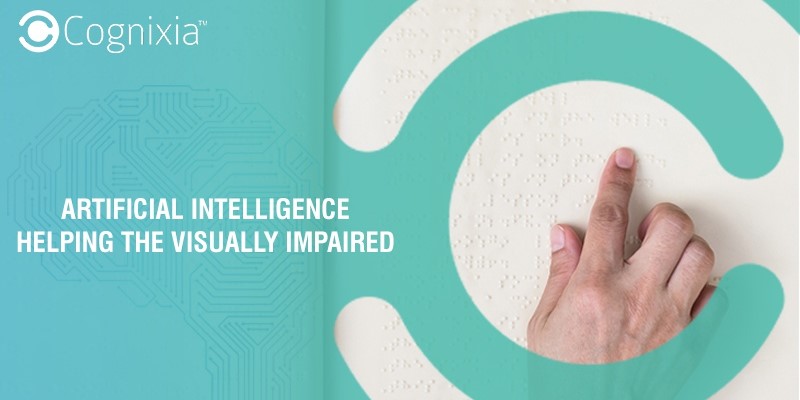The most prominent innovations of the 21st century will certainly include self-driving cars and automated vehicles. These innovations are powered by the advanced level of Artificial Intelligence and Machine Learning technology that have the ability to sense, process, react, and adapt to the external factors, just like humans. When it comes to safety, AI can not only predict and anticipate responses, but it can also prevent and mitigate the consequences of collision and roadblocks. It is likely to reduce the accident rate drastically and increase human productivity. No wonder why these innovations are growing at a spectacular pace! Just imagine if we could adapt this technology that powers self-driving cars, automated vehicles, and more, to situations that demand more attention. What if AI and Machine Learning abilities could be used to improve the lives of people who are visually impaired?

They say, “Good vision is a precious gift”, but do we really value it?
What if your vision was permanently compromised and no spectacle, lenses, or surgery could correct it? According to the World Health Organization, 1.3 billion people in the world live with some form of vision impairment. Think about their plight? Companies like Microsoft, Facebook, Google, Accenture, IBM, as well as startups such as OrCam, Mayfield Robotics, EyeFocus, Aipoly, Wayfindr, and many more are working towards combining vision aids with AI and machine learning. As technology continues to be adapted and tested, there is a hope that life for the visually impaired will have fewer obstacles.
Serious strides are being made in AI and Machine Learning technologies to help the visually impaired. From text-to-speech translations that describe emojis and pictures seen on social media to smart glasses and vision-free communication that could quite possibly serve as digital eyes for the visually impaired, technology is booming and it’s all thanks to artificial intelligence.
This technology has a transformational effect on the lives of people with visual impairment. You might have read about AI, watched it on television news, or you might be a tech-savvy enthusiast knowing everything about AI. It is a branch of computer science focusing on the creation of intelligent machines that work and reacts like humans. AI mimics human behavior without having the ability to perfect it, often achieved by trial and error. When the computer system learns the proper way to perform a task, it will continuously build on that newfound knowledge to achieve human-like mannerisms and responses to tasks. It is applied to accurately sense the external environment and make an accurate split-second decision based on human action. AI functions using large amounts of data and its fast, iterative processing along with intelligent algorithms, allowing the software to learn automatically from patterns or features in the data.
At present, there are various apps and wearable that use AI and machine learning to recognize and verbally narrate the world around the visually impaired. Some of these include – Seeing AI, NavCog, Horus, MyEye, Aira, AiServe, Drishti, and so on. The increasing access to artificial-intelligence-based vision-assist devices has the potential to take life to new heights.
Technology is transforming the way we work, live, and relate. It’s only when you completely understand AI and Machine Learning, you can take advantage of the opportunities it’s creating and help the visually impaired people around you! At Cognixia, we offer a comprehensive training package with a hands-on case study approach, enabling participants to explore the practical aspects of advanced level machine learning, artificial intelligence, and deep learning. Reach out to us today!

